Webb captures a dying star’s final performance in stunning detail
posted Thursday, July 14, 2022 at 9:30 AM EST
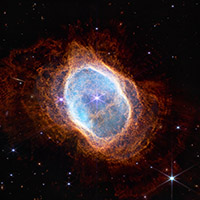
It's a big week for astronomy enthusiasts. After NASA and its partners unveiled the first five images from the James Webb Space Telescope, one of which was a spectrum emission graph rather than a traditional sort of visual, we took a closer look at Webb's first deep field image. Now, we're going to take a closer look at the Southern Ring Nebula, a "dying star's final 'performance."
The Southern Ring Nebula, also known as NGC 3132, the Eight-Burst Nebula, and Caldwell 72, is a bright planetary nebula in the constellation Vela. It is about 2,500 light-years from Earth.
NGC 3132 is extensively studied. Hubble has imaged it before. However, thanks to Webb's advanced instruments, including its Near-Infrared Camera (NIRCam) and Mid-Infrared Instrument (MIRI), Webb has unlocked new details about the complex system. Before seeing what's new, let's see what Hubble achieved.
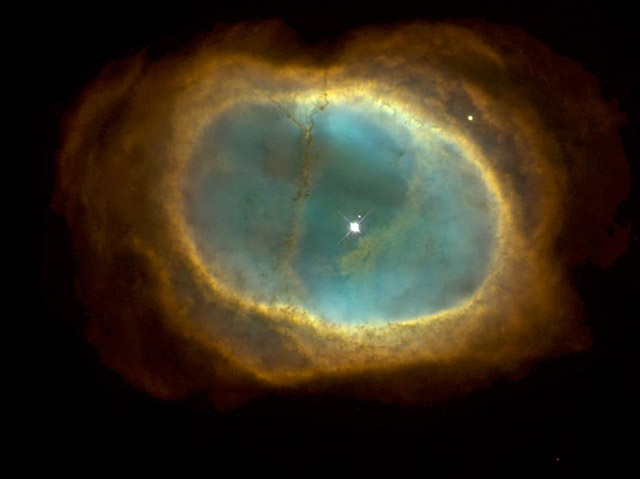
It looks great. But what does Webb see? Let's look first at the NIRCam image. The scene we're witnessing is due to a white dwarf star, the remains of a star much like our Sun, after the star has shed its outer layers and is no longer burning fuel through nuclear fusion. The layers surrounding the central star are these shed outer layers. Each visible layer, or shell, is evidence of an episode where the white dwarf star lost some of its mass. NASA writes, "The widest shells of gas toward the outer areas of the image were ejected earlier. Those closest to the star are the most recent. Tracing these ejections allows researchers to look into the history of the system."
However, the star in question is not the bright star with diffraction spikes, but rather, the diffraction spikes partially hide the white dwarf to the lower left of the predominantly bright star. The brighter star is involved. It orbits the white dwarf star and helps to distribute what the white dwarf star ejects.
The Webb team writes, "Over thousands of years and before it became a white dwarf, the star periodically ejected mass – the visible shells of material. As if on repeat, it contracted, heated up – and then, unable to push out more material, pulsated. Stellar material was sent in all directions – like a rotating sprinkler – and provided the ingredients for this asymmetrical landscape." At this point, the white dwarf is heating the gas in the inner regions. These regions appear blue in the NIRCam image and red in the MIRI image further below. Both stars are lighting up the outer regions, which are shown in orange (NIRCam) and blue (MIRI).
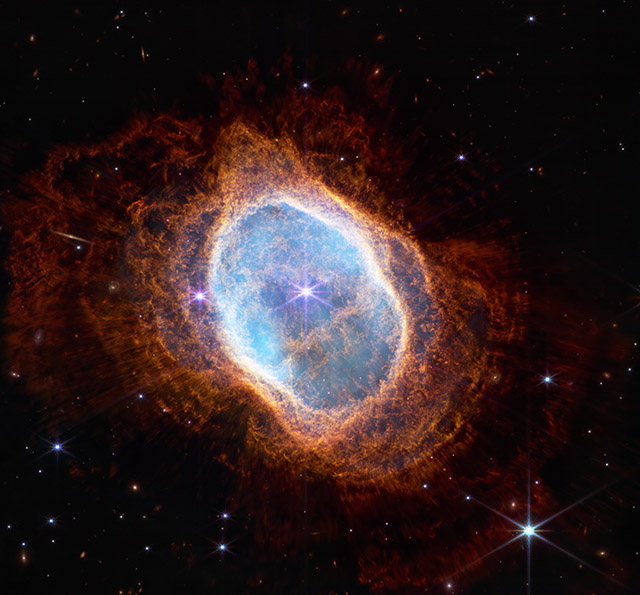
Credits: NASA, ESA, CSA, and STScI. Click here to view the full-resolution image.
The images captured by NIRCam and MIRI look so different because they capture different wavelengths of light. NIRCam observes near-infrared light, which is relatively closer to visible light wavelengths. MIRI images further into infrared, which helps MIRI see more of the dust surrounding the white dwarf star. Since MIRI can see more of the dust, the white dwarf star is easier to see. It's cloaked in thick layers of dust and appears larger and redder.
"Peer at the circular region at the center of both images. Each contains a wobbly, asymmetrical belt of material. This is where two 'bowls' that make up the nebula meet. (In this view, the nebula is at a 40-degree angle)," said the Webb team. "This belt is easier to spot in the MIRI image – look for the yellowish circle – but is also visible in the NIRCam image."
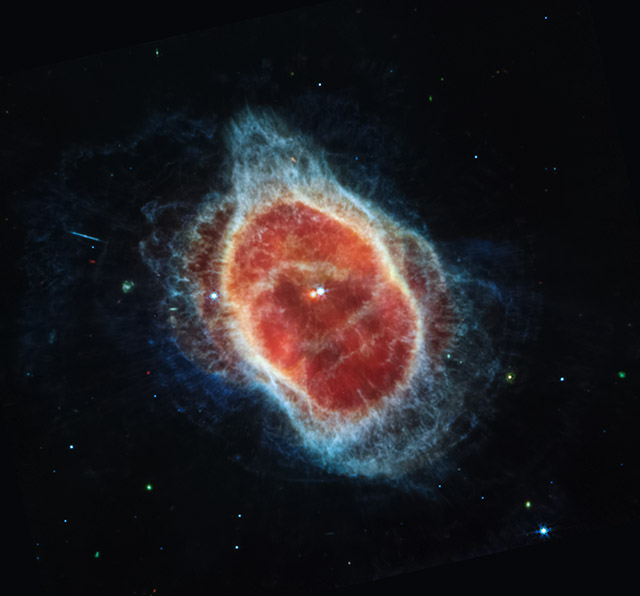
Credits: NASA, ESA, CSA, and STScI. Click here to view the full-resolution image.
If you view the full-size image, you may notice that the resolution between the two instruments is different. NIRCam looks noticeably sharper. "Physics is the reason for the difference in the resolution of these images. NIRCam delivers high-resolution imaging because these wavelengths of light are shorter. MIRI supplies medium-resolution imagery because its wavelengths are longer – the longer the wavelength, the coarser the images are. But both deliver an incredible amount of detail about every object they observe – providing never-before-seen vistas of the universe," explains the Webb science team.
Images like these are important because they provide astronomers with better data to investigate planetary nebulae like this. These clouds of gas and dust expelled by dying stars contain a litany of molecules, and the better the data about the gas and dust, the more refined our understanding of the composition of nebulae. If you understand the chemical composition, combined with the rest of our knowledge, it's also possible to understand the history of specific nebulae.
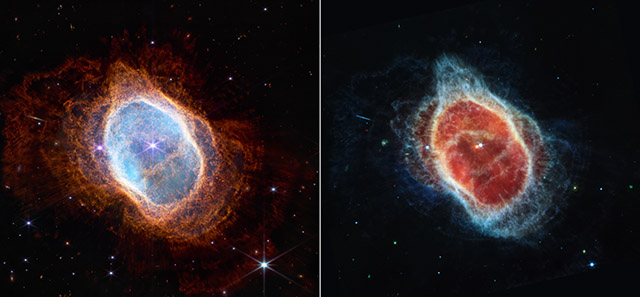
Credits: NASA, ESA, CSA, and STScI. Click here to view the full-resolution image.
Over thousands of years, the dust created by a dying star is expelled, as we see here, and dissipates into surrounding space. That dust can travel through space for billions of years, eventually becoming part of a new star or planet. We're watching a star in its final moments, expanding into the interstellar medium, and perhaps some of these particles will comprise part of a new star, or something else entirely, in the distant future.